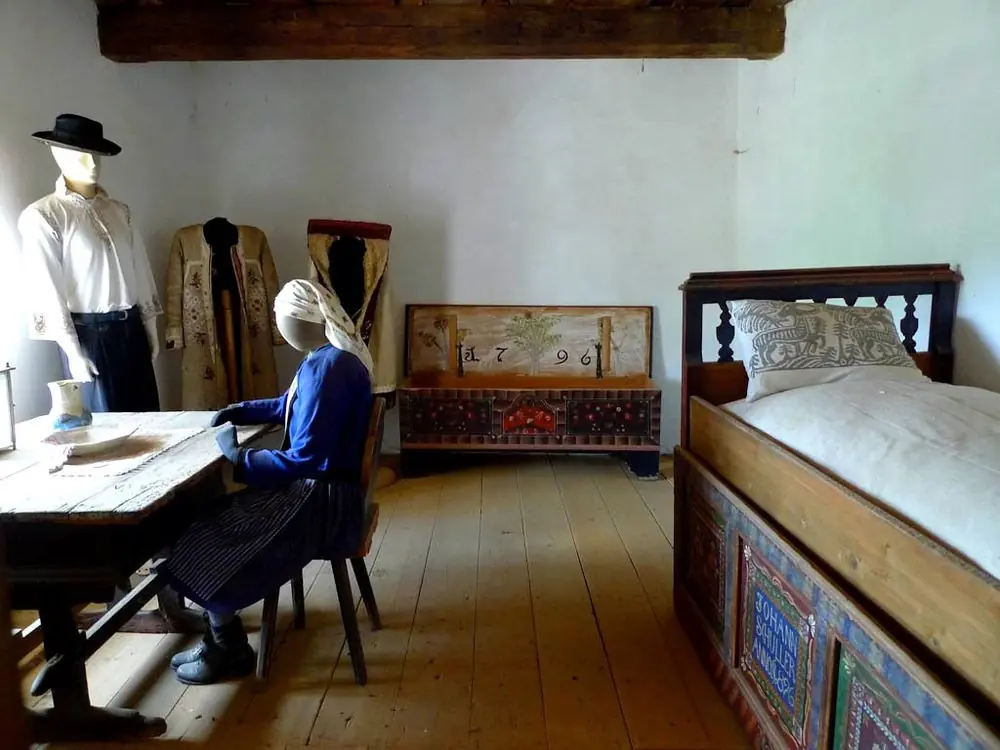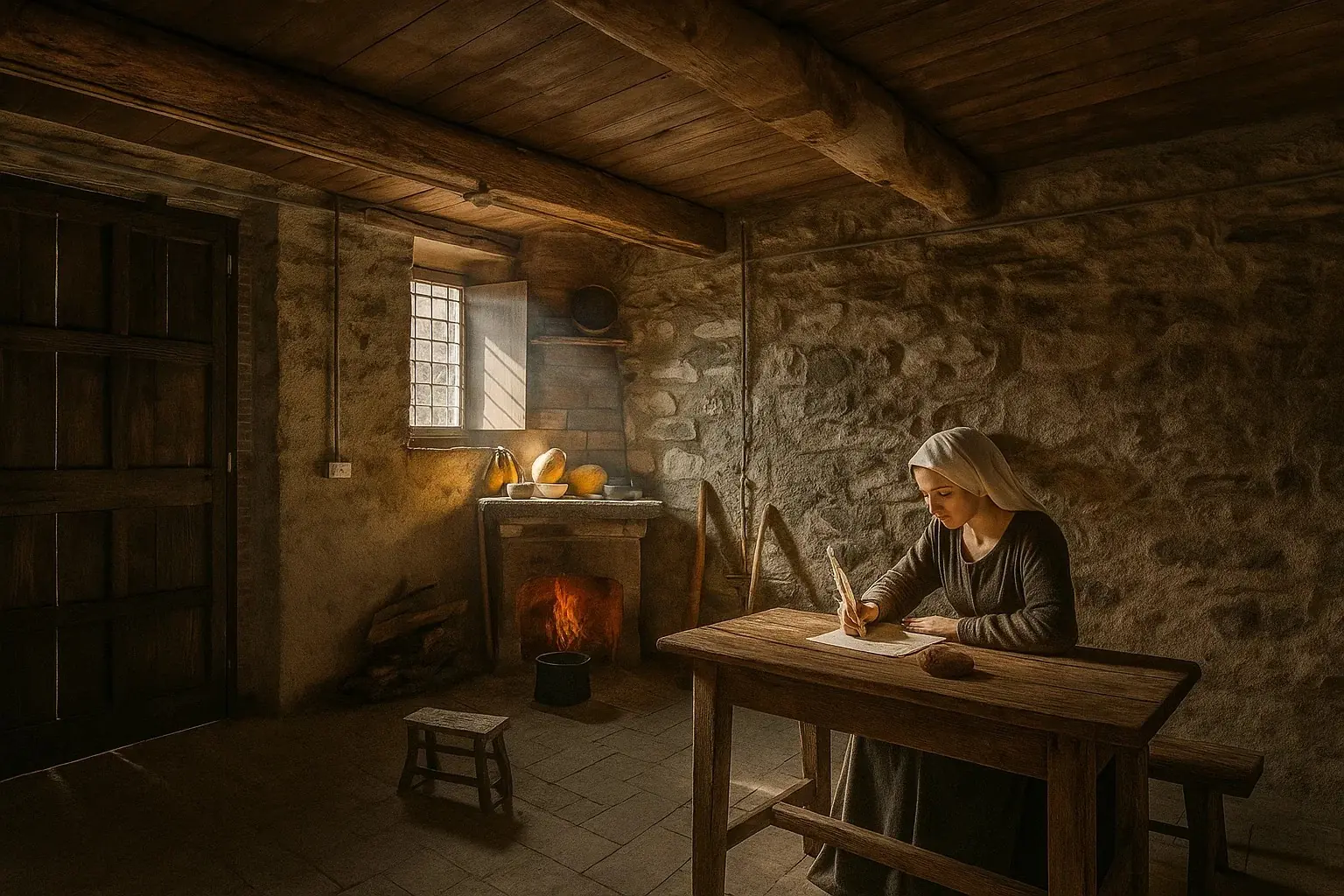
The Romanian Village That Prevented Divorce for 300 Years Using a Two-Week Marriage Room
In the heart of Transylvania, nestled among the rolling hills of Romania, lies a small village with an extraordinary record: Biertan has reported only one divorce in nearly 300 years. While modern society turns to therapy, self-help books, and legal proceedings to resolve marital conflicts, this village used a much simpler - yet surprisingly effective - method: a shared room, two weeks, and no escape.
This isn't folklore or legend. The tiny “divorce room” of Biertan truly exists, and its unconventional approach to resolving marital strife may hold valuable insights for today's relationships.

A Medieval Marriage Counselor: The “Two-Week Rule”
Biertan, a fortified Saxon village in central Romania, is a UNESCO World Heritage Site known for its stunning Gothic architecture and 15th-century fortified church. But beyond its physical beauty lies a unique social tradition that helped keep families together for centuries.
Whenever a married couple in Biertan expressed a desire to divorce, the local clergy didn’t grant the request immediately. Instead, the couple was locked in a small room together for two full weeks.
The room was basic but purposeful. It contained:
- One single bed
- One table
- One chair
- One plate, one set of utensils, one cup
- A small stove for cooking
In essence, the couple was forced to live as one person, sharing every essential item and spending all of their time in one another’s presence. There was no privacy, no third-party mediation, and no external distractions - only the opportunity to talk, reflect, and confront the real dynamics of their relationship.
“It wasn’t meant to punish or shame,” says a local historian. “It was meant to pause the emotions of conflict and offer space for understanding, even reconciliation.”
An Astounding Result: One Divorce in Three Centuries
The result of this practice? Over the course of approximately 300 years, Biertan recorded only one single divorce.
The data is anecdotal, but the story has been passed down through generations and is backed by historical accounts from the village church records. Whether through patience, endurance, or a rekindled connection, most couples who entered the room left with their marriage intact.
“There is something powerful in having no escape but conversation,” noted one Romanian sociologist studying historical marital customs. “The simplicity of the intervention allowed couples to see each other as human again.”
Psychological Insights: Why Did It Work?
Though Biertan’s “two-week rule” may sound primitive to some, modern psychology actually supports many of the principles behind it. The room essentially created a forced environment of cohabitation, eliminating escape routes, distractions, and the possibility of avoiding difficult conversations.
Key psychological mechanisms at play include:
- Forced Communication: Couples had no option but to talk. Even silence, in such proximity, often breeds reflection and dialogue.
- Routine and Simplicity: The lack of material excess shifted focus away from daily stressors and toward the relationship itself.
- Delayed Reaction: The waiting period functioned as a cooling-off phase, giving emotions time to settle before decisions were made.
- Shared Vulnerability: Being in a confined space with limited resources can foster empathy and interdependence.
“We often leave relationships in moments of heightened emotion or stress. Biertan’s approach removed the rush and replaced it with presence,” said Dr. Liana Petrescu, a Romanian family therapist.

A Tradition Rooted in Culture and Community
The practice in Biertan reflects more than just an interest in keeping marriages together - it speaks to a communal culture that valued reconciliation over separation.
The church, which acted as both a religious and civic authority, had strong incentives to maintain the social fabric. In a small agrarian society, where divorce could create economic and familial instability, encouraging couples to resolve their issues was in everyone's interest.
Interestingly, this wasn’t a method enforced with violence or stigma. It was voluntary, and many couples reportedly agreed to the process in good faith. They understood that their issues mattered - but so did the stability of the home and the wider community.
The Divorce Room Today: A Symbol of Lasting Love
Visitors to Biertan today can still see the infamous “divorce room” inside the Biertan Fortified Church, which has been carefully preserved. Tourists often marvel at the room’s simplicity - and the profound story it tells.
It has become more than a local curiosity; it’s a symbol of commitment, perseverance, and creativity in conflict resolution. Wedding photographers even stage shoots outside the church, and local guides tell the tale to wide-eyed listeners, many of whom wonder if something like it could work today.
“It might not be suitable for everyone,” admits a modern Romanian couple visiting the site, “but maybe we all need a bit of forced empathy sometimes.”
Could Biertan’s Method Work in the Modern World?
While the modern world is vastly different from 17th-century Transylvania, the core idea behind the “two-week rule” remains relevant: relationships need space for healing - and often, that space is found in togetherness, not separation.
Couples therapy, mediation retreats, and relationship boot camps now offer similar environments - though none as stark and raw as the original Biertan room. Still, the idea of disconnecting from the outside world to reconnect with your partner continues to gain popularity.
Moreover, some modern relationship coaches have adopted “time-in” strategies rather than “time-out” ones, encouraging couples to face their issues side by side rather than retreating into solitude.
The One Divorce That Did Happen
Of course, no tradition is infallible. Despite the effectiveness of Biertan’s marriage room, one couple did proceed with a divorce after completing the two-week period. Unfortunately, the records offer little detail about who they were or what led to the breakdown of their relationship.
Rather than being seen as a failure, though, this single exception serves to humanize the story. It’s a reminder that sometimes, even the best intentions and strategies can't bridge every divide - and that’s okay.
Legacy and Lessons for Today
As society grapples with rising divorce rates and an often transactional view of relationships, Biertan’s story offers a counter-narrative. It reminds us that:
- Marriage is a journey, not a decision
- Conflict doesn't always mean the end
- Time and closeness can heal more than distance ever could
“In a world of instant gratification, Biertan teaches us the value of patience, endurance, and being truly present with the people we love,” says one visitor reflecting on the story.
Biertan’s tiny divorce room may not solve every relationship problem, but it symbolizes something powerful: a belief in reconciliation, in love's ability to endure, and in the quiet strength of facing hardship together.
In today’s fast-paced, hyper-connected world, perhaps we all need a little Biertan in our relationships - a moment to pause, a space to talk, and the willingness to share a plate and a bed, no matter how small the room.
And if nothing else, Biertan proves one timeless truth: sometimes, love just needs a little time - and a lot of closeness - to find its way back.
News in the same category


Brain Teaser: Can you identify the error in this family’s dining room photo in under 15 seconds?

Authorities Discover 1,600‑Foot Drug Tunnel Under Us–Mexico Border With Lighting And Rail System

Bill Gates Says Only 3 Jobs Are Safe From AI — Are You In One Of Them?

Here’s What It Really Means When A Man Turns His Back In Bed

If You See A Man With One Painted Fingernail, Here’s What It Means

This house looked like it was about to fall into itself until one family stepped in

Bill Gates reveals profession which will remain '100% human' even after AI replaces most jobs

People shocked after passenger filmed as their phone went through X-ray scanner at airport

Mammoth structures discovered beneath Africa could be 'ancient planet' 4,500,000,000 years old

YouTuber discovers 78-year-old woman who's been keeping her own world alive in a 'dead' game for years

If You See A Man With One Painted Fingernail, Here’s What It Means

Six Minutes Beyond Life: What I Saw After Dying And Coming Back

Hotel Warning: 3 Disturbing Signs You Should Never Ignore

Air India Crash Passenger Shared Eerie Clip Showing Total Power Failure Hours Before Tragedy

Could Psilocybin Be The Key To A Longer Life? Researchers Are Shocked

If You See A Fence Painted Purple, You Better Know What It Means – Knowing This Can Save Your Life

What Causes Those Strange Ripples In Your Jeans After Washing?

Expert reveals horrifying reality of what would happen if Earth's rotation continues to speed up

Largest piece of Mars ever on Earth could fetch stunning $4,000,000 at auction
News Post

Waking Up with Numb or Tingling Hands: What It Really Means (Science-Based)

Scientists Explain The Effects of Eating Too Much Sugar

Urgent Warning: U.S. Salmon May Be Infected with Japanese Tapeworm, Say Scientists

Earth Plunged Into Darkness For Six Minutes In Rare Event Not Seen In A Century

Brain Teaser: Can you identify the error in this family’s dining room photo in under 15 seconds?

Authorities Discover 1,600‑Foot Drug Tunnel Under Us–Mexico Border With Lighting And Rail System

Bill Gates Says Only 3 Jobs Are Safe From AI — Are You In One Of Them?

Here’s What It Really Means When A Man Turns His Back In Bed

If You See A Man With One Painted Fingernail, Here’s What It Means

This house looked like it was about to fall into itself until one family stepped in

Why Kidney Failure Is Striking The Young—And How To Stop It

Bill Gates reveals profession which will remain '100% human' even after AI replaces most jobs

People shocked after passenger filmed as their phone went through X-ray scanner at airport

Mammoth structures discovered beneath Africa could be 'ancient planet' 4,500,000,000 years old

YouTuber discovers 78-year-old woman who's been keeping her own world alive in a 'dead' game for years

Nurse Reveals The Spine-Chilling Truth About What Happens After We Die

If You See A Man With One Painted Fingernail, Here’s What It Means

One Month Before A Heart Attack, Your Feet Will Give You These 6 Silent Warnings

Six Minutes Beyond Life: What I Saw After Dying And Coming Back
